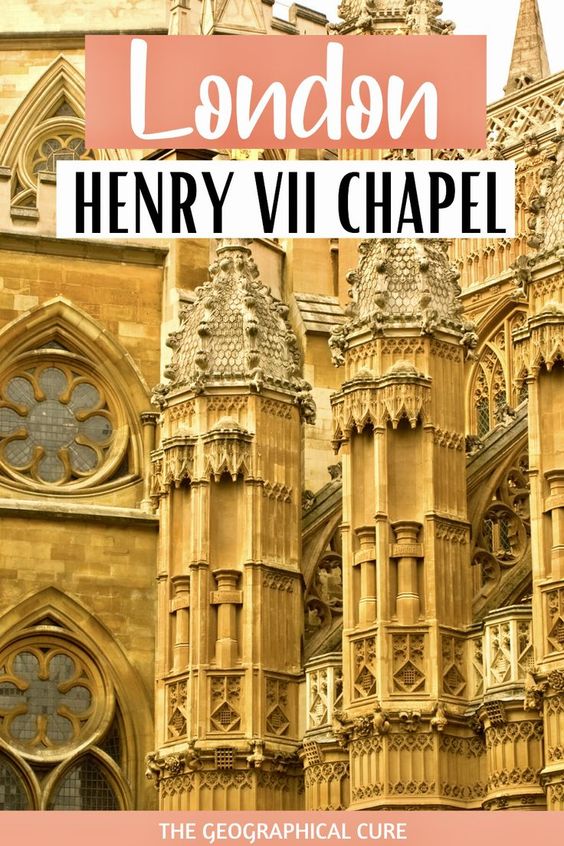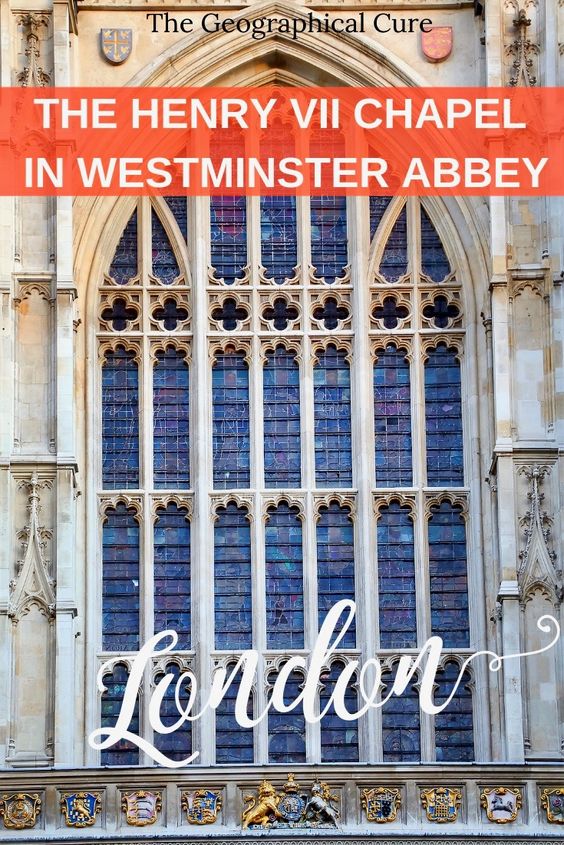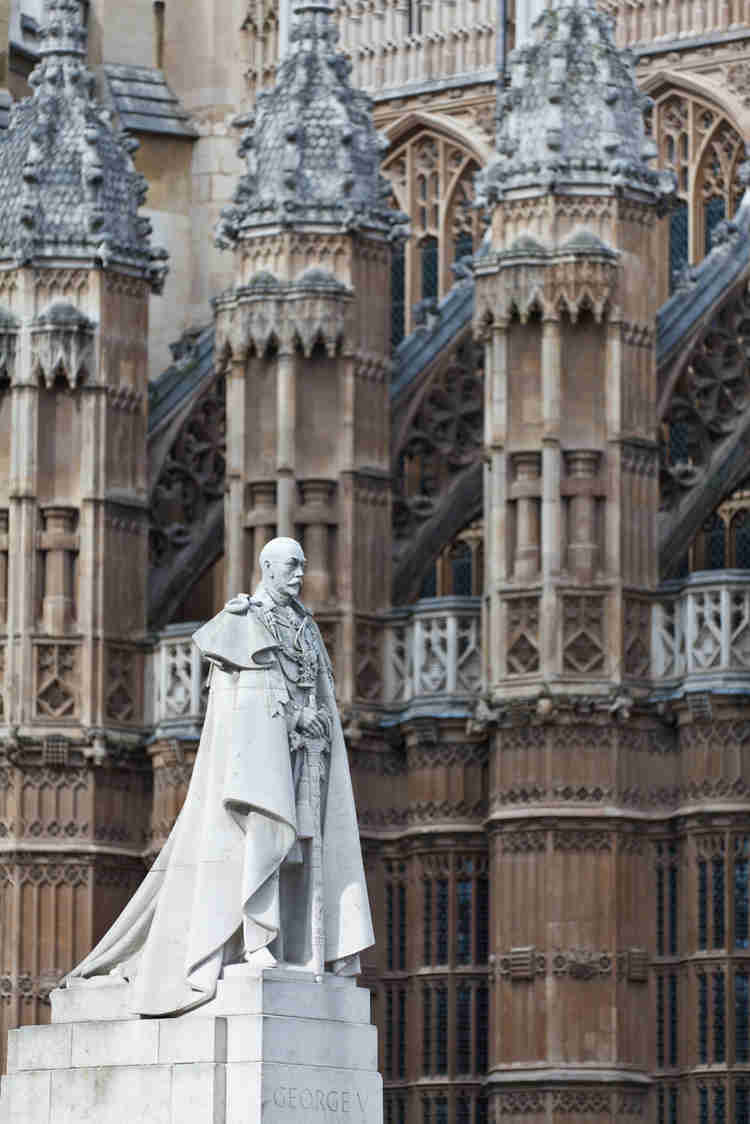
statue of King George V outside the Henry VII Chapel at Westminster Abbey
Planning a trip to London? Here’s my guide to the Henry VII Chapel in Westminster Abbey.
London’s Henry VII Lady Chapel is simply stunning. The ancient chapel is a must visit site in London, especially for history and architecture buffs. It’s the last great masterpiece of English medieval architecture, the crowning glory of the world famous Westminster Abbey, and the mausoleum for much of England’s royalty.
With all those accolades, the chapel was grandiosely nicknamed a “wonder of the world.” The chapel is the work of England’s first Tudor monarch, Henry VII, who vanquished the York king, Richard III in the Battle of Bosworth and seized control of England.
The chapel was dedicated to the Blessed Virgin Mary in 1503. It’s known as the Henry VII Chapel, although technically its name is the Lady Chapel.
The chapel’s architect is unknown. But historians believe that Robert Janyns, Jr. is the design genius.
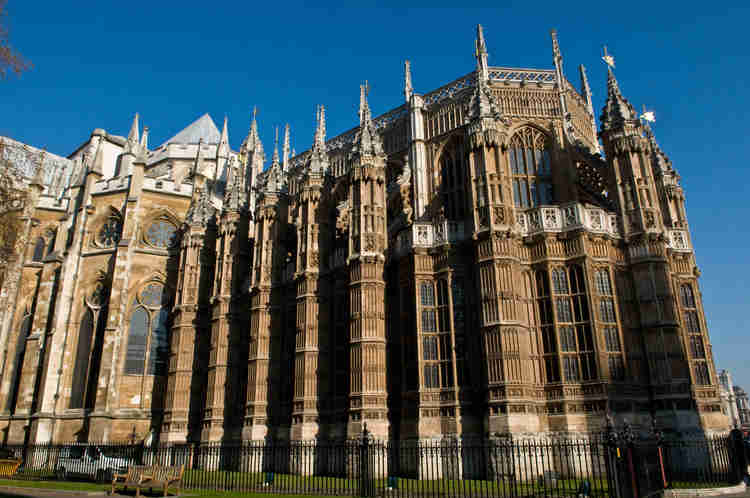
Henry VII & the History of the Lady Chapel
Built between 1503 and 1516, Henry VII broke the bank for his new chapel. It’s essentially an ornate homage to and keepsake of the Tudor dynasty.
The Henry VII Chapel might also have been a bit of Tudor propaganda at the time. It was intended to be a shrine to Henry’s half-uncle, the Lancastrian king, Henry VI. Henry VI was insane, had been deposed by Edward IV, and was likely murdered by Edward IV in the Tower of London in 1471.
Henry didn’t have a particularly good hereditary claim to the throne. But his mother, Margaret Beaufort, who was a prominent member of Richard III’s court, convinced him he was divinely chosen, god’s anointed king.
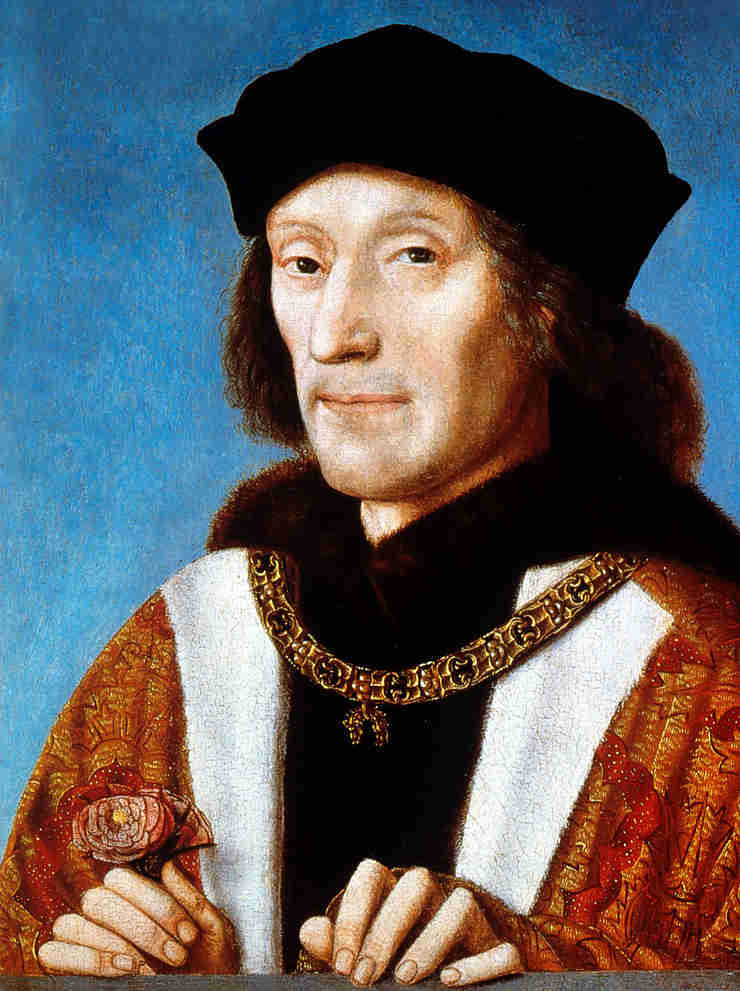
King Henry VII by Unknown Netherlandish artist oil on panel, 1505
Henry raised an army in France and launched a war against Richard III. A victorious Henry had promised to marry Elizabeth of York, Edward IV’s eldest daughter.
He wasn’t thrilled about the prospect. But the match was intended to bolster Yorkist support for Henry VII and unite the York and Lancaster houses. King Henry VII was crowned on August 22, 1485.
To buttress his divine right to the crown, Henry VII sought to have Henry VI canonized. That plot failed. So the spectacular chapel he built for Henry VI was used for Henry VII’s family instead.
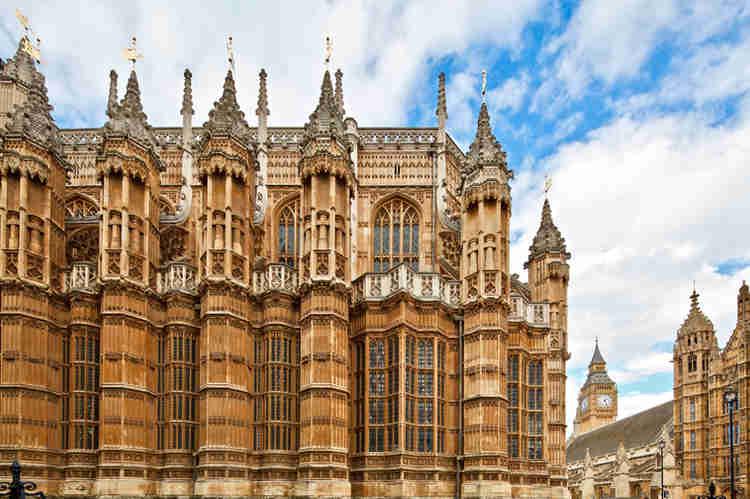
the curving and undulating exterior walls of the Henry VII Chapel
What To See at the Henry VII Chapel
Here’s what you can’t miss at the Henry VII Chapel.
1. The Exterior of the Henry VII Chapel
The Henry VII Chapel is at the far eastern end of Westminster Abbey. It’s separated from the rest of the abbey by brass gates and a flight of stairs.
The chapel was built during the Renaissance period. But, at the time, Gothic architecture was still popular. The chapel was built in the Perpendicular Gothic style.
This style is more ornate than French Gothic and uses highly decorative tracery effects. The chapel contrasts with the plainer Gothic style of the rest of the abbey.
On the exterior, no line continues straight for more than a few feet. There’s an unceasing pattern of advance and recession.
Each of the flying buttresses is linked to a polygonal tower, capped with a cupola. Between the buttresses is a line of bay windows. The building almost appears to have glass walls.
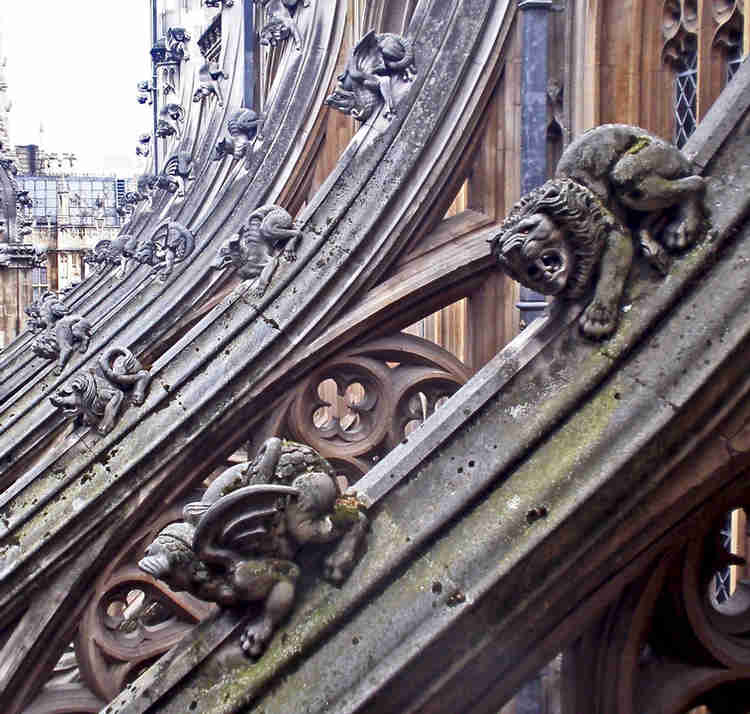
little demons on the flying buttresses
2. The Interior of the Henry VII Chapel
The interior is a superlative harmonious whole. The walls are curved. Every niche is shaped into moldings, pedestal, or niches. According to Washington Irving, the walls
“are wrought with universal ornament, encrusted with tracery, and stopped into niches, crowded with statues of saints and martyrs. Stone seems, by the cunning weight of the chisel, to have been robbed of its weights and density, suspended aloft, as if by magic, and the fretted roof achieved with the wonderful minuteness and airy security of a cobweb.”
3. Vaulted Ceiling
The chapel’s most striking feature is its ornate high vaulted vaulted ceiling. The column piers splay out into a fan shape.
There’s elaborate highly decorative tracery everywhere. It obscures the structural system and hanging carved pendants. The pendants seem to defy gravity. They hang down like stalactites hanging from the roof of a fairy cavern.
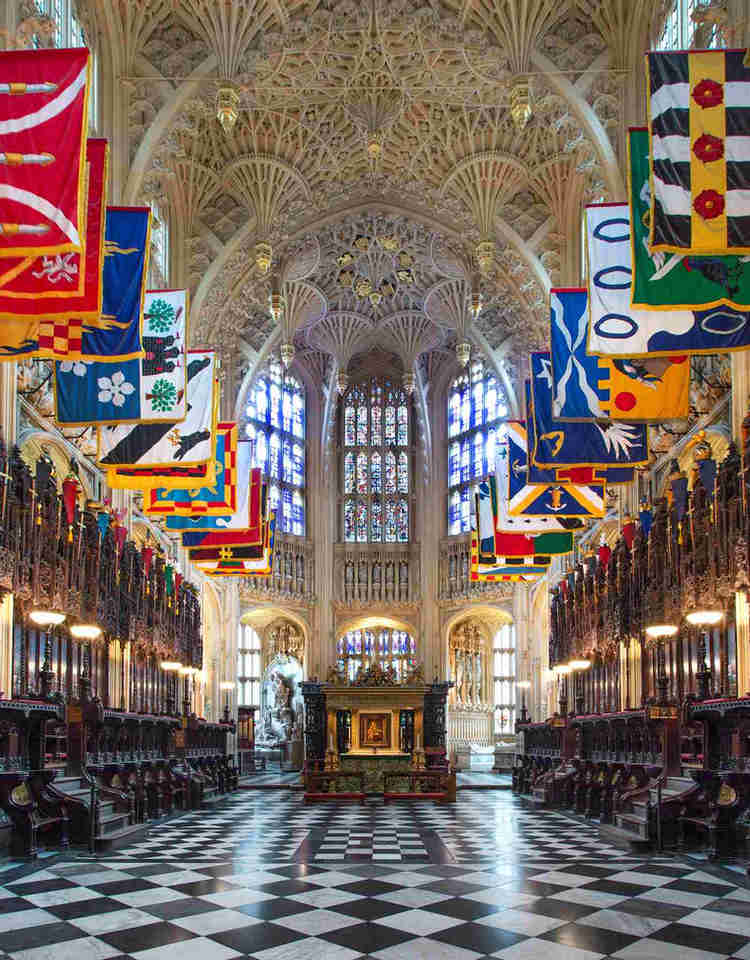
the Henry VII Lady Chapel of Westminster Abbey
4. Oak Stalls
Beneath the oak stalls are intricately carved misercords, which depict scenes with mythical beasts. A misericord is a hinged seat that tips up to form a ledge to lean on.
The stalls were designated for all living Knights of the Most Honourable Order of the Bath. When a knight became part of the order, he received a stall that was subsequently adorned with his crest and coat of arms.
Beginning in 1725, heraldic banners of the knightswere hung above the stalls. New knights are still installed every 4 years.
The chapel is enclosed within a brass screen, ornamented with 95 statues set into alcoves.
5. Tudor Roses
Throughout the chapel, you’ll see the motif of the “Tudor rose,” a mixture of the white rose of York and the red rose of Lancaster. The motif was used heavily by Henry VII to emphasize the importance of the Tudor dynasty and reiterate the legitimacy of his claim to the English throne, which was hotly debated during the War of the Roses.
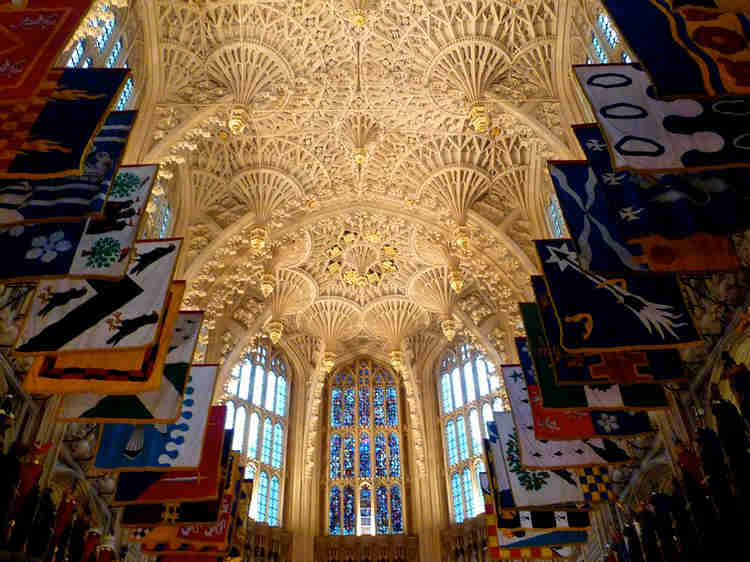
the fan vaulted ceiling of the Henry VII Chapel
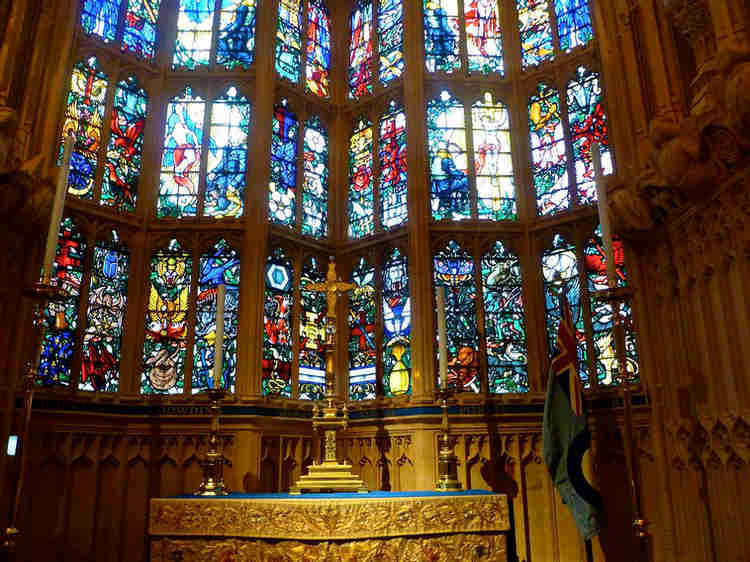
stained windows in the Henry VII Chapel
6. A Masoleum to English Royalty
15 kings and queens are buried in the Henry VII Chapel. Henry VII and his wife, Elizabeth of York, share a tomb. Their bronze gilt effigies were sculpted by Florneitne artist Pietro Torrigiano. It lies behind the altar.
Henry VII’s Henry’s mother, Margaret Beaufort, a rather evil (though ostensibly pious) lady who helped Henry VII secure the throne, also died in 1509, shortly after Henry VIII’s coronation.
King James I is also buried in the vault beneath the monument. His tomb was only discovered in 1867 when Dean Stanley searched and excavated the royal tombs looking for James’ final resting place, which had gone unrecorded. James’ lead coffin was found in the Henry VII vault.
bronze effigies of Henry VII and Elizabeth of York behind the chapel’s altar
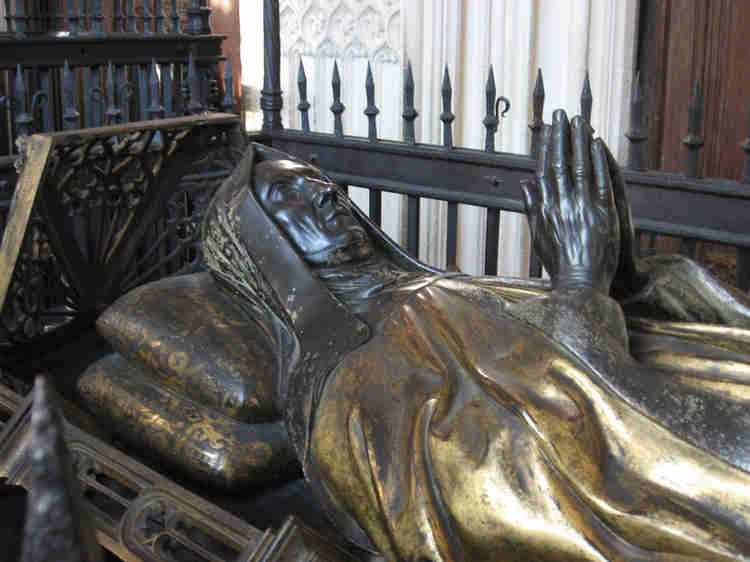
Margaret Beaufort’s tomb in the Henry VII Chapel
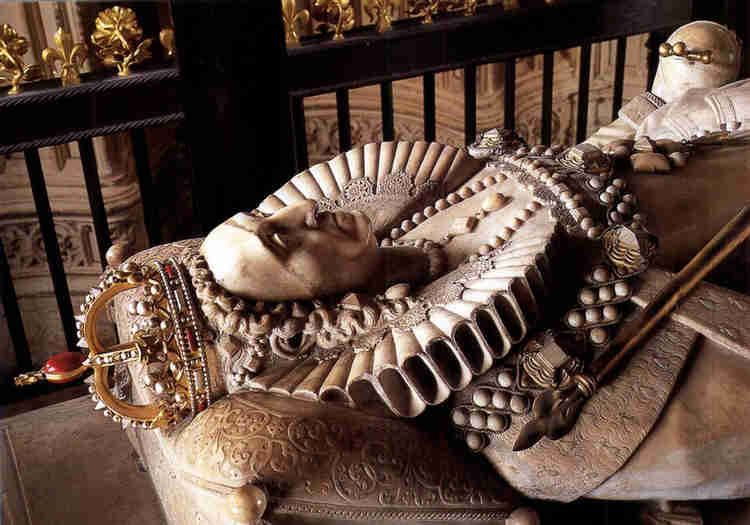
effigy of Elizabeth I
Henry VII’s granddaughter, Elizabeth I, daughter of the infamous Henry VIII and his second wife Anne Boleyn, was buried in the chapel along with her half-sister, Mary I. At odds in life, they ironically lay together in death.
Mary Queen of Scots, who Elizabeth I executed for treason, is also buried there. Having neglected his mother in life, Mary’s son James I commissioned a costly and majestic white marble monument in memory of his mother.
The Stuart monarchs and Hanoverian monarch are also buried there.
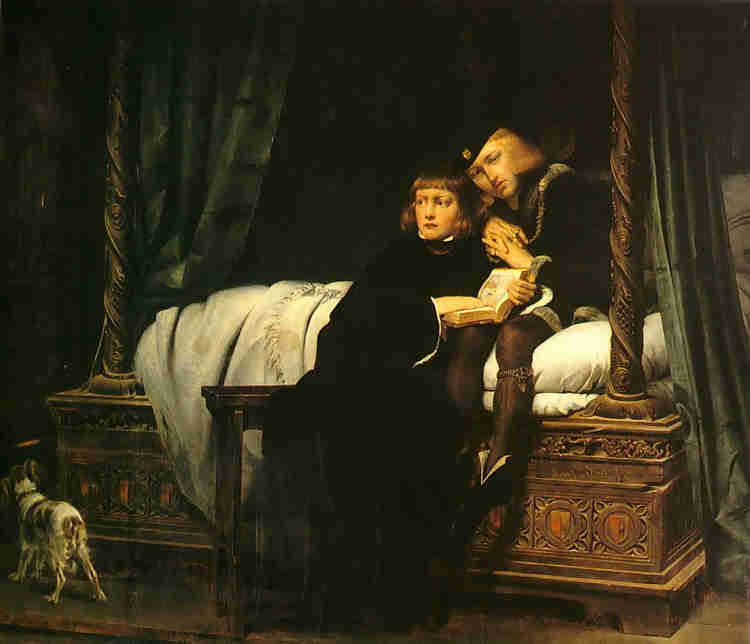
Paul Delaroche, The Princes in the Tower, 1830 — in the Louvre
7. The Urn of the “Princes in the Tower”
Of particular interest, at a least to me, is another famous item in the the Henry VII Chapel. There, you’ll find a white marble container, which contains the reputed remains of the “Princes in the Tower,” Edward V and his younger brother Richard, Duke of York. The princes were the sons of King Edward IV, brother of Richard III.
While living in the Tower of London, the two princes disappeared in 1483. Richard III was crowned king. Their fate is the greatest true crime cold case in English history, which I’ve written about at length.
Thanks mostly to posthumous Tudor propaganda, their uncle King Richard III was accused of murder. Even Shakespeare jumped on the bandwagon with his Tudor era play Richard III. The myth of the evil hunchback was born.
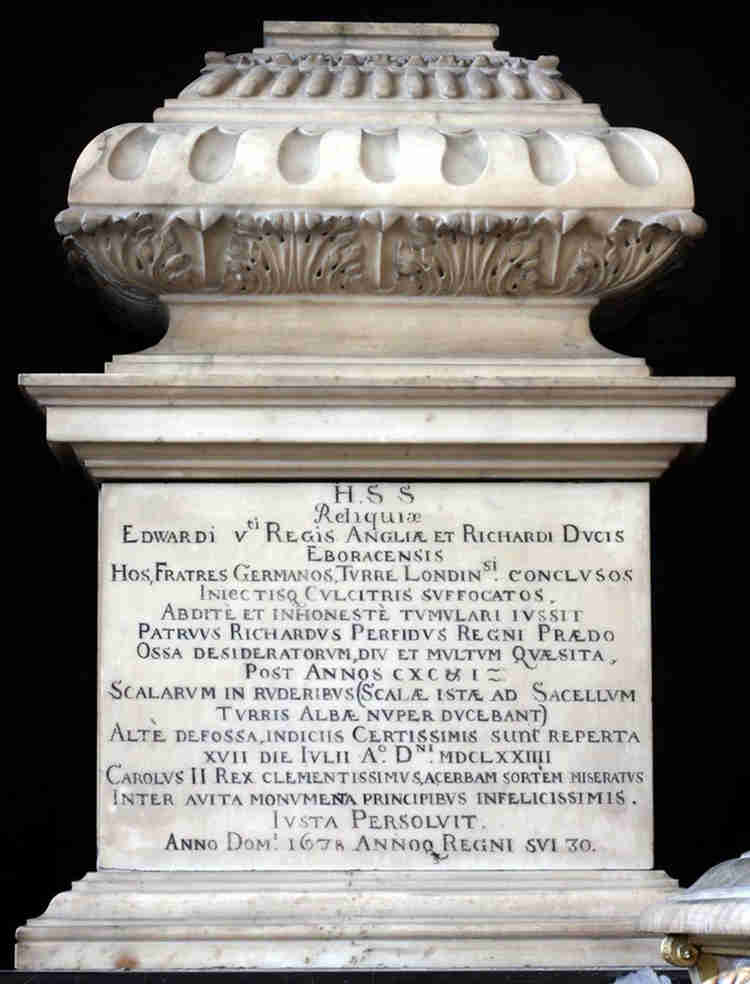
the white marble urn containing the reputed remains of the “Princes in the Tower”
In 1674, nearly two centuries later, workmen demolished a staircase within the Tower of London, discovering the bones of two unidentified children. It was immediately assumed the bones were those of the two princes.
There’s not an iota of archeological, historical, or scientific evidence for that assumption. Many people were buried in the tower, which itself was built on an ancient graveyard.
With all pomp and circumstance, the reigning monarch Charles II asked architect Sir Christopher Wren to design a white marble container for the “remains.” It was reverently placed in Westminster Abbey, close to the tomb of their sister, Elizabeth of York.
The remains in the Wren urn are likely bogus. But we could find out for sure. In 2012, the bones of Richard III were discovered in a parking lot in Leicester England.
If the princes’ urn were opened, DNA tests could be conducted to see if the bones match. If they don’t match, it’s not likely the princes were murdered in the tower. But Westminster Abbey has refused to cooperate, considering it akin to tomb raiding.
Canaletto, The Interior of the Henry VII Chapel, early 1750s
Don’t miss this beautiful “wonder of the world.” The Henry VII Lady Chapel is the last great masterpiece of English medieval architecture and death palace of English Royalty. It should be on everyone’s to do list for London.
You may enjoy these other London travel guides and resources:
- 5 Days in London Itinerary
- Guide To Free Museums in London
- Guide To the Churchill War Rooms
- Tourist Traps To Avoid in London
- Guide To the Tower of London
- Guide To Hampton Court Palace
- Guide To Hatfield House
If you’d like to visit the Henry VII Chapel in Westminster Abbey, pin it for later.

